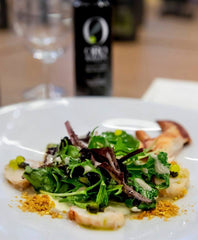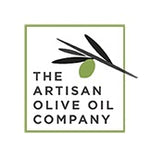How to buy the best extra virgin olive oils in the UK ?

OLIVE OIL CLASSIFICATIONS: HOW GOOD IS THE "EXTRA" IN VIRGIN OLIVE OILS?The best olive oil shelves whether in a fine food shop or a supermarket offer a large selection of brands at very different price points. In the UK, a bottle of 0.5 litre can vary from £4 to over £50. Consumers have the choice between large international brands, supermarket own labels and smaller artisan producers. Most olive oils sold in the UK are labelled as extra virgin olive oils, distinguishing them from the lower quality categories which are virgin olive oils and lampante (not suitable for human consumption). Virgin olive oils being almost non-existent in the UK, they leave the extra virgin olive oil category as the only available in the retail network. A number of chemical tests as well as a sensory analysis are the key criteria for the classification of an olive oil as extra virgin. Its acidity may not exceed 0.8%, its peroxide level (which measures the level of oxidation) has to be to below 20 mmeq/kg in addition to a number of additional technical measurements. An olive oil has also to be free of any sensory defects to be considered extra virgin. It is becoming clear that the classification as "extra virgin olive oil" is relatively broad and could easily be sub-divided into average, good and excellent. The fact that olive oil is a natural juice which can evolve in quality during its shelf life makes this distinction particularly relevant for the consumer. An oil may satisfy all the legal requirements at the time of bottling but could deteriorate to a virgin oil before its consumption.
SENSORY PROFILE: QUALITY IS OBVIOUS WHEN YOU SMELL AND TASTE REALLY GOOD OILS
Good and excellent olive oils tend to present a chemical profile which is significantly better than the legal requirements and a sensory profile which is well defined across three key attributes fruitiness, bitterness and pepperiness. This can also be regarded as an oil's personality. Depending on the olive varieties, nature of the terroir, weather conditions, time of harvest, extraction method extra virgin olive oil offer a similar variety as wines. In order to find the best olive oils for you, we would recommend trying various oils from different regions starting with mild profiles and progressively moving into intense green oils which will have very specific culinary uses. Some fine food shops display sensory profile and food pairing suggestions and can be a great starting point in your search. The Flos Olei guide, which is the equivalent of the Parker guide for olive oils offers a wealth of information on over 700 premium olives oil from over 50 countries with a simple scoring system, sensory profiles and food pairing suggestions. It can be be downloaded on smart phones in its short version. International olive oil competition such as the Mario Solinas award, Alimentos de Espana, Evooleum, Ovibeja and BIOL are some of the events bringing together some of the world's best olive sommeliers judging the sensory profile of some of the world's best olive oils. This can be a further source of information in the search for exceptional olive oil Grand Crus.

OLIVE OIL PACKAGING : BUYING WITH YOUR EYES
The quality of an extra virgin olive oil is highly sensitive to its storage conditions. As exposure to light and heat can be highly detrimental to olive oil, we would recommend choosing olive oils bottled in either dark glass or tins. it means that the producer has chosen to make a significant investment in a more expensive packaging (which also tends to be easier to recycle) in order to protect the product for longer. Even though the price per litre may be more economical for larger formats, it is advisable to choose a format which can be consumed within 2-3 months at most. Once a bottle has been opened, the contact with open air will trigger an oxidation process which will lead to a deterioration in the quality of the olive oil. A 0.5 litre tends to be a very popular for this particular reason. 3 and 5 litre formats are best suited for restaurants.
Design and packaging have evolved radically over the last 10 years with highly sophisticated professionals creating the most impactful labels. You may very well look for an exceptionally elegant bottle for your kitchen but ultimately exceptional olive oils can be produced in small quantities by artisan family businesses with limited marketing budgets.
OLIVE OIL PROVENANCEIt is a legal requirement to indicate the origin of an olive oil. This can be a particular country, such as Spain, Italy or Tunisia or a combination of countries. Oils blended from various countries represent a significant proportion of the UK market. Whilst some of these oils can present good value for money, they are less likely to rank among the highest quality segments. Spain is by far the largest olive oil producing country. Italy sells significantly more olive oil than it produces, which highlights a bottling model whereby oils from other countries are mixed in Italy under Italian or international brands. Greece, Tunisia and Turkey also rank among the largest world's producers of olive oils. Traceability and short value chains are, in our mind, key factors in identifying the highest quality extra virgin olive oils. An artisan producer who is responsible for every step of the production process from the planting of the trees to the harvesting and oil extraction can offer a very high level of traceability. A blending processing on a large scale is unlikely to match the level of quality of a small artisan producer primarily because the quantities of high quality olive oil tend to be very modest in comparison with common quality extra virgin olive oil. High-quality olive oils are typically harvested early in the season and extracted at low temperatures within a few a hours. This particular production process has a totally different cost base from standard extra virgin olive oil. For instance, the yield, which is the quantity of oil produced from a given quantity of olives, can more than double when comparing early to late harvests.
It is worth finding out where the oil comes from, in terms of country and region of origin, the more precise, the better. Italy has developed a large number of PDOs (Protected Denomination of Origin) which can serve as a useful tool to learn more about the origin of an oil. Similar denominations can be found in many other countries. Many producers will indicate on their website the origins of their olives.
OLIVE OIL PRICING: DOES PRICE EQUAL QUALITY?
Whilst the highest prices do not necessarily translate into the highest quality, the link between them is relatively strong. In many regions of Italy, bulk prices for extra virgin olive oils at the farm, are often in excess of Eur 8.50 per litre. Bottling, labelling, transport, storage and distribution costs are to be added to construct the retail price. It is therefore unlikely very good Italian extra virgin olive oils in the lowest price category. Based on our understanding of the UK market, we start to see interesting extra virgin olive oils in the £6.50-10.00 price zone and increasingly more about the £10 price mark for a 0.5 litre dark glass bottle format. Below £6.50, it is possible to find good price to quality relationships but quality level in general to be lower than in the higher price points. It could be worth using several oils for different uses, a more economical one for everyday uses and a higher quality oil for finishing.
In summary, to find the best olive oil for your kitchen:
- Choose a dark glass bottle
- Look for single estate olive oil
- Buy the most recent harvest
- Select a format a format you can use within 2-3 months
- Look for information on the sensory profile (mild, medium, intense) to best suit your recipes
- Try a few different brands and varieties to find your favourite
To start your search, visit our e-shop.
